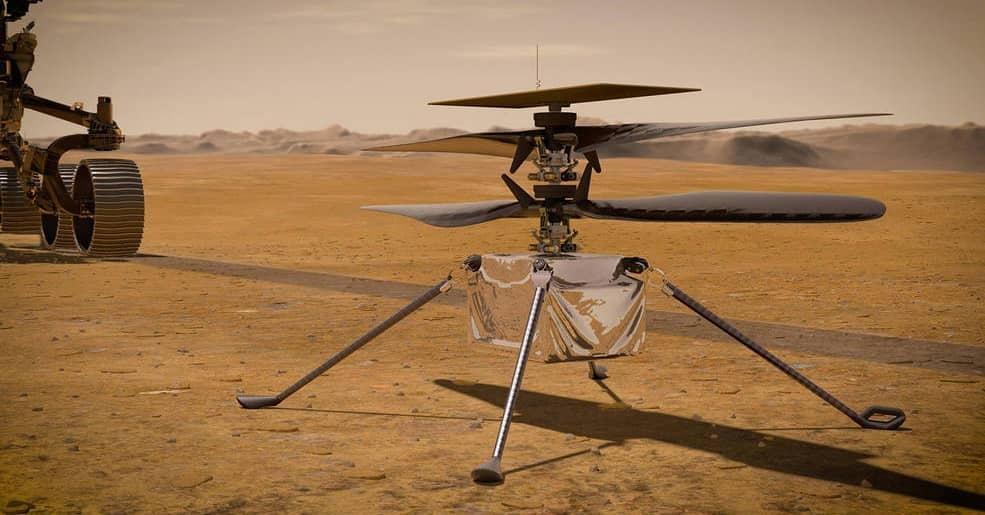A Piece of the Wright Brothers’ Flyer is on Board as NASA’s Ingenuity Attempts First Flight on Mars


More than a century after Orville and Wilbur Wright made the first powered, controlled flight on Earth, NASA will attempt the first powered, controlled flight on another planet.
Ingenuity, the experimental Martian helicopter, is expected to take flight no sooner than April 8. It arrived on the red planet tucked underneath the Perseverance Mars Rover.
NASA plans for the four-pound (1.8kg) helicopter to rise about 10 feet (3 meters) into the Martian air on its first hop.
Its blades are made of carbon fiber. They are arranged in two rotors that spin in opposite directions at around 2400 rpm. That’s to make up for the extremely thin air on Mars. Up to five longer and higher flights are planned.
The helicopter airfield is next to the Perseverance landing site in Jezero Crater. The rover will observe the flights from a safe distance before driving off on its search for ancient Martian life.
Bobby Braun, director of planetary science at NASA’s Jet Propulsion Laboratory, calls Ingenuity’s flight a “Wright brothers moment.”
The tiny helicopter is carrying a small swatch of fabric from the 1903 Wright Flyer, the Wright brothers’ first airplane that originally took flight in Kitty Hawk, North Carolina.
The material is taped to a cable beneath the helicopters’ solar panels, and the postage stamp-sized piece of muslin from the plane's bottom left wing was provided by Carillon Historical Park in Dayton, Ohio, where the Wright Brothers National Museum is located.
NASA contacted the park in 2019 to explore a way to include a piece of their history without adding too much weight to the helicopter, and the piece of fabric turned out to be the best choice.
Park curator Steve Lucht said the swatch of fabric made the 300-million-mile journey to Mars with the blessing of the Wright brothers’ great-grandniece and great-grandnephew.
"Wilbur and Orville Wright would be pleased to know that a little piece of their 1903 Wright Flyer I, the machine that launched the Space Age by flying barely one quarter of a mile, is going to soar into history again on Mars!" Grandniece Amanda Wright Lane and grandnephew Stephen Wright said in a statement provided by the park.
Orville Wright was on board the Wright Flyer for the world’s first powered, controlled flight on December 17, 1903. The brothers took turns, making four flights that day.
This isn’t the first time a piece of the Wright flyer has travelled into space. Neil Armstrong carried a fragment of Wright Flyer wood and fabric with him on the Apollo 11 flight to the moon in 1969. John Glenn also carried a swatch with him aboard space shuttle Discovery in 1998. Both astronauts are from Ohio.